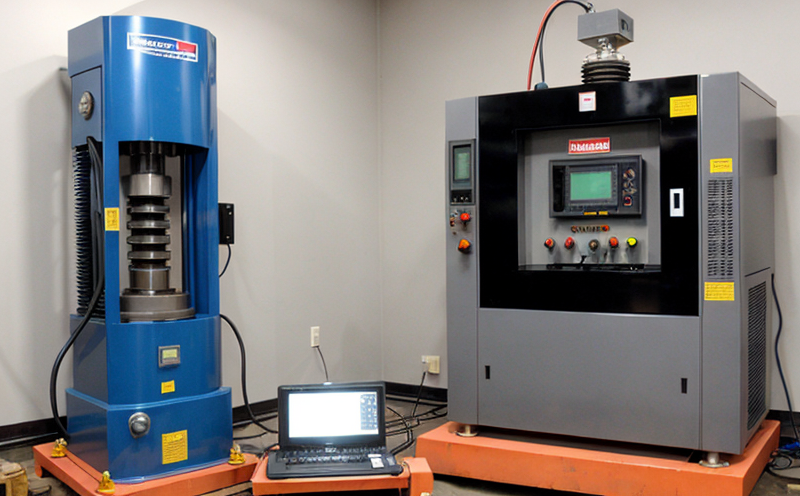ISO 16063 21 Calibration of Vibration Transducers
The calibration of vibration transducers according to ISO 16063-21 is a critical process that ensures the accuracy and reliability of measurements in mechanical shock and vibration testing. This standard provides detailed procedures for calibrating velocity, acceleration, and displacement sensors used in various industries such as automotive, aerospace, and electronics.
The calibration process involves several steps to ensure precise measurement results. First, it is essential to understand that the accuracy of the transducer directly affects the quality of data collected during testing. Therefore, any deviation from the specified standards can lead to inaccurate test results, which may compromise product design and performance.
Calibration typically starts with a detailed inspection of the sensor to ensure there are no physical damages or signs of wear that could affect its accuracy. The sensor is then connected to a calibration system capable of generating controlled levels of vibration. This ensures that the transducer can be tested under known conditions, allowing for accurate measurement.
The ISO 16063-21 standard specifies stringent acceptance criteria for the calibration process. These include pre-calibration checks such as zero and full-scale measurements, linearity testing, and stability tests. Post-calibration validation is also required to confirm that the sensor meets all specified tolerances.
Once calibrated, vibration transducers are used in various applications within the electronics sector. For instance, in automotive manufacturing, these sensors help ensure the durability of electronic components under harsh environmental conditions like road vibrations and mechanical shocks. In aerospace, they play a crucial role in testing avionics systems during flight simulations to guarantee their reliability.
The calibration process itself is highly technical and involves specialized equipment and trained personnel. The use of ISO 16063-21 ensures that all parties involved—manufacturers, testers, and regulators—are working towards the same standard for accuracy and consistency in vibration testing.
Furthermore, compliance with this international standard helps organizations meet regulatory requirements and quality standards set by various bodies worldwide. This is particularly important in sectors where precision measurement plays a significant role in ensuring product safety and performance.
In summary, ISO 16063-21 calibration of vibration transducers is a vital step in the testing process that guarantees accurate data collection and reliable results. By adhering to this standard, manufacturers can ensure their products meet stringent quality criteria, thus enhancing overall product reliability and safety.
Why It Matters
The importance of ISO 16063-21 calibration cannot be overstated in ensuring the integrity and accuracy of vibration testing. Inaccurate measurements can lead to flawed conclusions about a product’s performance under real-world conditions, which could result in substandard products reaching end-users.
- Quality Assurance: Properly calibrated transducers ensure consistent quality across production batches, leading to higher customer satisfaction and reduced warranty claims.
- Regulatory Compliance: Adherence to international standards like ISO 16063-21 demonstrates a commitment to regulatory compliance, which is essential for maintaining good standing with industry bodies and authorities.
- R&D Efficiency: Accurate calibration allows R&D teams to focus on product development rather than troubleshooting inaccuracies in test data. This accelerates the time-to-market process.
Incorporating ISO 16063-21 into your testing protocols not only enhances the reliability of your products but also positions your organization as a leader in precision engineering and quality assurance.
Applied Standards
The application of ISO 16063-21 is primarily focused on ensuring accurate calibration of velocity, acceleration, and displacement sensors used in mechanical shock and vibration testing. This standard is widely adopted across various industries including automotive, aerospace, electronics, and manufacturing.
For instance, in the automotive industry, the calibration process ensures that electronic components can withstand the rigorous conditions encountered during road tests. In aerospace, it guarantees that avionics systems perform reliably under simulated flight conditions. Similarly, in the electronics sector, calibrated sensors are crucial for testing the durability of circuit boards and other sensitive components.
ISO 16063-21 provides a comprehensive framework for calibrating vibration transducers, covering all aspects from initial inspection to post-calibration validation. This ensures that every step of the process adheres to recognized international standards, thereby enhancing the credibility of test results.
Use Cases and Application Examples
In automotive manufacturing, ISO 16063-21 calibration is used to ensure the durability of electronic components under road vibrations. During testing, sensors are calibrated to accurately measure these vibrations, providing insights into how well the components can withstand real-world conditions.
- Aerospace Testing: In aerospace applications, calibrating vibration transducers helps test avionics systems during flight simulations. This ensures that the systems perform reliably under simulated environments.
- Manufacturing: In manufacturing processes, calibrated sensors are used to monitor and control the mechanical shocks encountered by products on production lines.
In electronics testing, calibrated transducers play a crucial role in assessing the durability of circuit boards and other sensitive components. This helps ensure that these components can function reliably under various environmental stresses.





